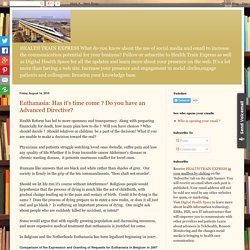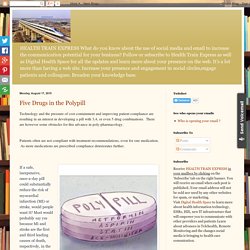

gary l
Nation With Crumbling Bridges and Roads Excited to Build Giant Wall. WASHINGTON (The Borowitz Report)—As the United States’ bridges, roads, and other infrastructure dangerously deteriorate from decades of neglect, there is a mounting sense of urgency that it is time to build a giant wall.

What do President Obama, Grand Theft Auto-5 and Healthcare.gov have in common ? Warning ! Adult audiences only. Nation With Crumbling Bridges and Roads Excited to Build Giant Wall. WASHINGTON (The Borowitz Report)—As the United States’ bridges, roads, and other infrastructure dangerously deteriorate from decades of neglect, there is a mounting sense of urgency that it is time to build a giant wall.

Meaningful Use....What the AMA has to say about Meaningful Use. October 1, 2015 is fast approaching.

That is the deadline for providers to adopt ICD-10. In addition to that requirement Meaningful Use continues to be a bane on providers. Physicians perceive meaningful use as less than meaningful when resources could be better used to improve EHR usability rather than some bureaucratic bloat/. Meaningful Use (MU) isn't working, and now the government wants to move forward with Stage 3 implementation. But if it's not fixed, that could lead to less time with patients, less innovation and costly penalties if physicians are unable to comply. Recently Rep. At a recent AMA town hall meeting on EHRs and MU, the response from physicians was overwhelming: MU is not working, and physicians cannot move to a learning health system unless they have the tools to do so. In Washington, D.C., August means one thing—congressional recess. Has it's time come ? Do you have an Advanced Directive? Health Reform has led to more openness and transparency.

Along with preparing financially for death, how many plan how to die ? Will you have choices ? Who should decide ? Should relatives or children be a part of the decision? What if you are unable to make a decision toward the end? Comparison of the Expression and Granting of Requests for Euthanasia in Belgium in 2007 vs 2013 A Study of the First Year of the End-of-Life Clinic for Physician-Assisted Dying in the Netherlands.
Gary Levin sur Twitter : "10 Habits of Amazing Facilitators. 10 Habits of Amazing Facilitators. When you host an event or present to an audience, you have a purpose.

Whether you are connecting thought leaders, helping people generate new ideas, build your organization or educate a group, you want your audience to be engaged. This means inspiring people towards action. Here are 10 habits of amazing facilitators: 1. They Know Their Audience Mindful facilitators know that if they keep the attention of the audience, they’ll be successful in getting their message across and reaching their goal. 2. Every time you have another individual’s attention, you have an opportunity. 3. Successful speakers pick a subject and stick to it. 4. Amazing facilitators do not just know how to keep their audience engaged: they encourage people to take action. 5.
Through opening the space to allow the audience to interact and engage with them or others, facilitators are increasing the awareness of the audience, improving attention and make the event more successful. Five Drugs in the Polypill. Technology and the pressure of cost containment and improving patient compliance are resulting in an interest in developing a pill with 3,4, or even 5 drug combinations.

There are however some obstacles for this advance in poly-pharmacology. Patients often are not compliant with treatment recommendations, even for one medication. As more medications are prescribed compliance deteriorates further. If a safe, inexpensive, once-a-day pill could substantially reduce the risk of myocardial infarction (MI) or stroke, would people want it? Most would probably say yes because MI and stroke are the first and third leading causes of death, respectively, in the United States.1 It is likely that many employers, health plans, and payers would also say yes because MI and stroke cost the US economy more than $300 billion annually in health care expenditures and lost productivity.2 Improving adherence by simplifying drug regimens and reducing their cost could have far-reaching consequences. Frances Oldham Kelsey, Who Saved U.S. Babies From Thalidomide, Dies at 101. Photo The sedative was Kevadon, and the application to market it in America reached the new medical officer at the Food and Drug Administration in September 1960.

The drug had already been sold to pregnant women in Europe for morning sickness, and the application seemed routine, ready for the rubber stamp. But some data on the drug’s safety troubled Dr. Frances Oldham Kelsey, a former family doctor and teacher in South Dakota who had just taken the F.D.A. job in Washington, reviewing requests to license new drugs. She asked the manufacturer, the William S. Thus began a fateful test of wills.
Dr. She was hailed by citizens’ groups and awarded honorary degrees. “Her exceptional judgment in evaluating a new drug for safety for human use has prevented a major tragedy of birth deformities in the United States,” Kennedy said at a White House ceremony. Dr. Gary Levin sur Twitter : "Welcome! #hcsm...